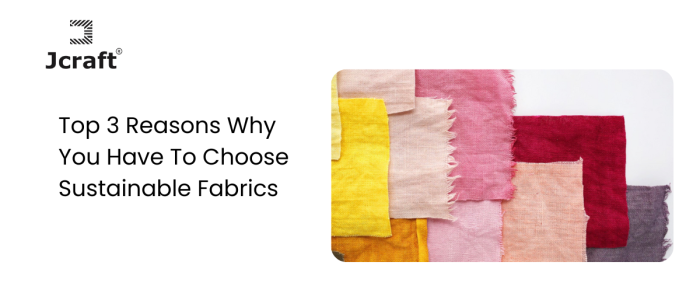Top 3 Reasons Why You Have To Choose Sustainable Fabrics

The fashion industry is one of the most polluting industries in the world. It is responsible for a significant amount of water waste, greenhouse gas emissions, and textile waste. In recent years, there has been a growing awareness of the environmental impact of the fashion industry, and many people are looking for ways to reduce their impact by choosing sustainable fabrics.
Top 3 Reasons to Choose Sustainable Fabrics
1. Sustainable fabrics are better for the environment.
Sustainable fabrics are made from natural materials, such as organic cotton, hemp, and linen. These materials are grown in a way that minimizes their environmental impact. For example, organic cotton is grown without the use of harmful pesticides and fertilizers. Hemp requires very little water to grow, and linen is a biodegradable fabric.
2. Sustainable fabrics are better for your health.
Sustainable fabrics are often made from natural materials that are soft and breathable. This means that they can help regulate your body temperature and keep you comfortable. Additionally, some sustainable fabrics, such as organic cotton, have been shown to have antibacterial properties.
3. Sustainable fabrics are more durable.
Sustainable fabrics are often made from strong and durable materials. This means that they can last longer than synthetic fabrics, which can save you money in the long run. Additionally, sustainable fabrics are often recycled or composted at the end of their life, which helps reduce waste.
If you are looking for ways to reduce your environmental impact and improve your health, choosing sustainable fabrics is a great place to start. There are many sustainable fabrics available on the market, so you can find one that fits your needs and budget.
Here are some tips for choosing sustainable fabrics:
• Look for fabrics that are made from natural materials, such as organic cotton, hemp, and linen.
• Avoid fabrics that are made from synthetic materials, such as polyester and acrylic.
• Choose fabrics that are certified by a reputable organization, such as the Global Organic Textile Standard (GOTS).
• Ask the retailer where the fabric was made and how it was produced.
By following these tips, you can be sure that you are choosing sustainable fabrics that are good for the environment and your health.
